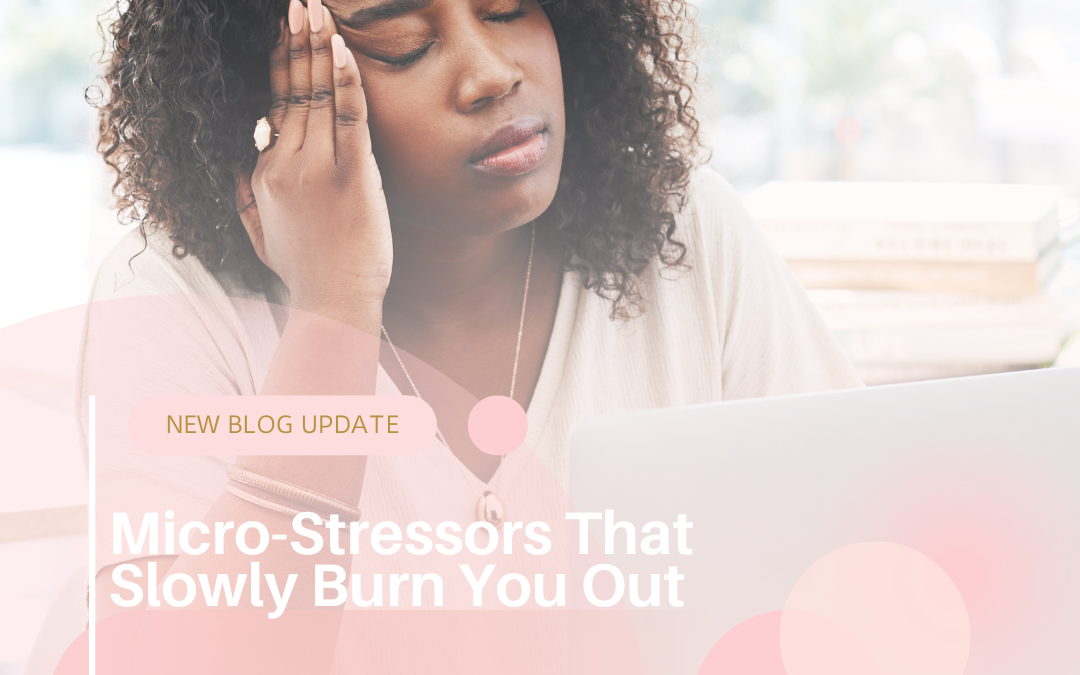When we think about burnout, we often picture big, obvious stressors—working long hours, dealing with major life changes, or juggling multiple responsibilities. But what about the small things? The tiny, constant annoyances that don’t seem like a big deal on their own?
Those are microstressors—and they might be doing more damage than you realize.
What Are Microstressors?
Microstressors are the low-level, often invisible stressors we encounter in daily life. Individually, they might seem harmless, but collectively, they can wear you down over time. Think of them as little drops of water filling a bucket—eventually, that bucket overflows.
Examples include:
-
Constant notifications and interruptions
-
Running late or rushing through the day
-
Passive-aggressive emails or unclear communication
-
Decision fatigue (like choosing meals or outfits every day)
-
Minor conflicts with coworkers or family members
-
Feeling underappreciated or ignored
-
Small technical difficulties (Wi-Fi issues, app glitches)
They’re often things we brush off, but they still trigger our stress response—again and again.
How Microstressors Add Up
Because microstressors don’t feel like “real” stress, we don’t always address them. Instead, we internalize them, adapt around them, or push through—until our minds and bodies begin to feel the cumulative effects:
-
Mental fog or irritability
-
Trouble sleeping or winding down
-
Increased anxiety or emotional reactivity
-
Feeling overwhelmed by “little things”
-
Physical fatigue or headaches
In short, microstressors chip away at our mental bandwidth, which can leave us feeling exhausted—even if nothing major has happened.
Why We Overlook Them
We’re taught to “tough it out” or only take stress seriously when it’s big and obvious. That mindset can cause us to ignore the impact of daily microstressors. Plus, many are so embedded in modern life—like constant multitasking or checking emails during dinner—that they feel normal.
But normal doesn’t mean healthy.
How to Manage Microstressors
The goal isn’t to eliminate every small stressor (life happens!), but to notice them and create space for recovery.
1. Name and Track Them
Start by identifying your common microstressors. You might even keep a “stress log” for a few days to see what comes up repeatedly.
2. Simplify Decisions
Cut down on decision fatigue by creating routines or planning ahead. Meal prepping, laying out clothes, or setting regular work hours can reduce the mental load.
3. Set Micro-Boundaries
Protect your energy by setting limits with your phone, email, or even certain people. For example: no emails after 7 PM, or one tech-free hour a day.
4. Create Micro-Recoveries
Just like stress builds up in small doses, relief can too. Try deep breathing, stretching, stepping outside, or taking a 5-minute break in between tasks. These “micro-recoveries” help your nervous system reset.
5. Practice Self-Compassion
It’s easy to feel guilty or “dramatic” for being stressed by small things. But your feelings are valid. Acknowledging them with kindness can prevent them from spiraling into burnout.
Final Thoughts
Burnout doesn’t always come from a single overwhelming event—it often creeps in through the cracks of everyday life. Microstressors may be small, but their impact is real. The more we learn to recognize them, the better we can care for our minds, our bodies, and our overall well-being.
If you’re feeling emotionally drained or overwhelmed, therapy can help you sort through the noise and develop strategies to manage daily stress. You deserve support—even for the “small stuff.”


Recent Comments